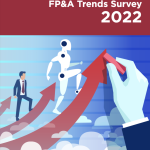This paper covers the findings of our sixth annual FP&A Trends Survey, where we share the...
The recent scenario has led organisations worldwide to find a new way to accelerate the development of their FP&A departments.
With this in mind, FP&A Trends examined the latest trends and developments in its latest FP&A Trends webinar, sharing invaluable findings from the 6th Annual FP&A Trends Survey and considering how FP&A departments can operate and thrive in the “brave new world” of business.
This article provides an overview of the topics and cases presented and discussed by experts and the results of interactive polls.
2022 FP&A Trends Survey Results
Larysa Melnychuk, Founder and CEO of the FP&A Trends Group & International FP&A Board, shared the findings of the 6th Annual FP&A Trends Survey in 2022.
Findings from the survey indicate that in the last three years, the perception of strategic dialogue has increased strongly. In other words, the strategic value of FP&A within the area has increased by 6% compared to the last survey and 10% higher than in 2020.
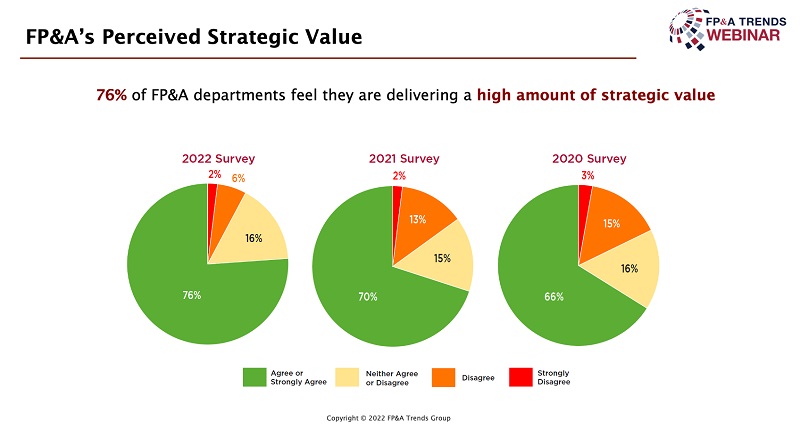
Figure 1: The Strategic Value FP&A Departments Deliver
Regarding the data quality for decision-making, there was a less significant increase of just 2%. However, 34% of respondents stated that they still have unreliable or low-quality data, representing a 4% drop. Data quality remains one of FP&A’s most significant issues, which keeps FP&A teams devoting their time to low and mid-value activities.
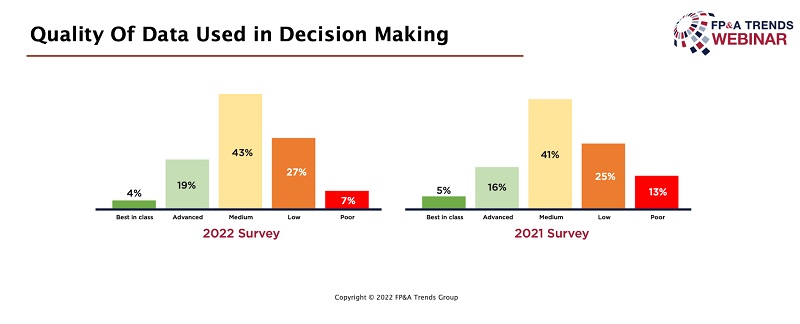
Figure 2: Quality of Data Used in Decision-Making
In another question posed to respondents, it was revealed that 56% of decisions made are based on data, which is 10% lower compared to the previous year. Larysa explains that one of the causes is the environment of great uncertainty concerning previous data, which does not accurately reflect future results.
On the other hand, the level of satisfaction with forecasts fell by 15% compared to last year.
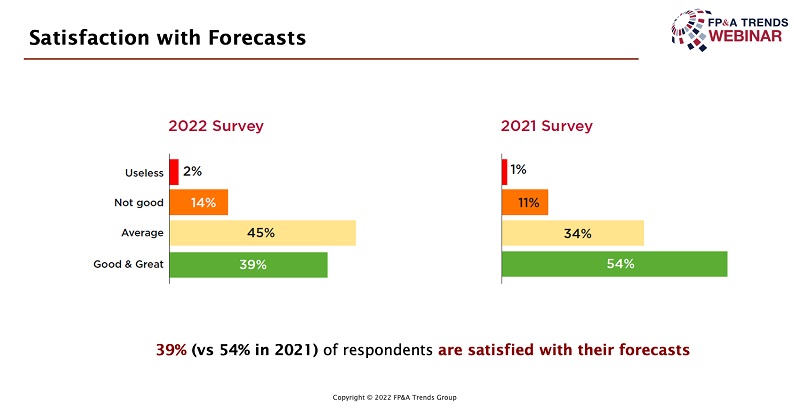
Figure 3: Satisfaction with Forecasts
How To Make Data-Driven Decisions in Uncertain Times
Thomas Lundell, Senior Director at NetApp, explains that, particularly in the last two years, we have faced unprecedented uncertainty with the Covid-19 pandemic, unstable inflation rates, armed conflicts, highly volatile stock markets, and turbulent supply chains. Variables such as these can make decision-making even more complicated.
One of the steps Thomas took at NetApp to ease the uncertainties was to reduce the planning horizon without renouncing the three-year strategic plan. This involved moving the annual planning cycles from cycles of 2 to 6 months and maintaining the quarterly forecasts, while annual budget plans have changed to semiannual plans.
By reducing the time horizon, the impact of these measures has made the goal-setting process more reasonable. Actions of this type allow you to change your "static" process to a more "dynamic" model, following the latest market conditions.
Thomas Lundell shared a step-by-step guide to defining a coherent and more assertive decision-making process:
- Know your mission.
- Identify data sources – adjust your planning horizon and thus make decisions based on data from shorter-time planning periods.
- Clean and organise data – ideally, use software tools that perform the cleaning and organising functions.
- Analyse data – this is a crucial component, the time the team spend generating insights and analysing the data.
- Make a decision.
Scenario Modelling in a Disrupted Environment
Scenarios are an essential mechanism for the FP&A department. The defined scenarios will impact the decisions that will be taken in the future. The last survey showed that 26% of the respondents were unable to run scenarios.
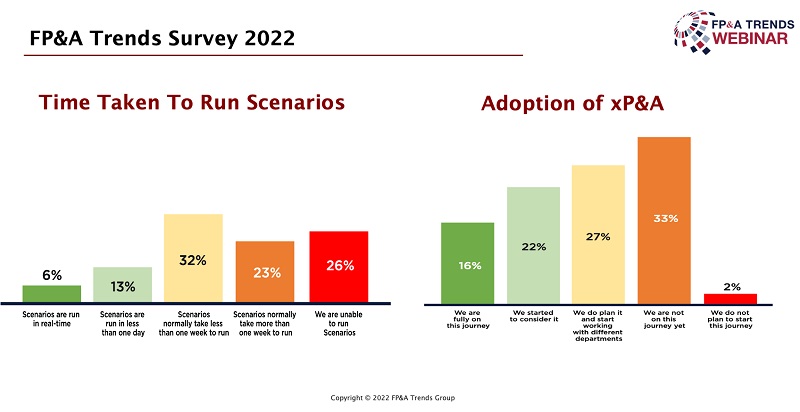
Figure 4: Time Taken To Run Scenarios
Marat Lomakov, Finance Director at Ecolab, shared with us his strategies adopted in a disruptive and inflationary environment. Europe is currently going through one of its most severe moments with a gas and energy supply crisis and inflation rates increasing.
Marat stated that to understand these specific market movements directly affecting Ecolab’s business, it was necessary to expand the scenarios. One of the crucial points is that in addition to looking at financial data, it is necessary to specify what happened so that the supply of these raw materials impact these products.
When you articulate and anticipate the creation of scenarios, you enrich discussions and promote more appropriate decision-making actions.
It is crucial to define the paths you want to go, and Marat shared the four steps:
- Anticipate the impact – stay in connection with reality.
- Speed over accuracy – provide options/ranges of the outcome.
- Review & refine in case the situation changes.
- Continuous learning process if new factors are coming into the picture.
Key Factors for Data-Based Decision-Making
During the webinar, a conducted poll contained the following question: "What is the main barrier on your way to data-driven decision-making?" Most participants commented that their main difficulty was a deficiency in appropriate analytical tools. We can therefore conclude that planning continues to be executed traditionally.
One of the findings was that for high management to embrace financial planning truly, it is necessary to adopt a “mindset” in which planning is continuous, moving away from planning, budgeting and forecasting on a scheduled basis. This type of planning allows businesses to adapt in the face of crisis and take up opportunities as they arise.
How Can Technology Support Successful Trends?
Pras Chatterjee, Senior Director at SAP, claims that 39% of respondents who say they are satisfied with the quality of their predictions may answer that way due to technology.
The different scenarios we are facing in modern life can become highly alarming, so what can we do to improve these processes and bring greater assurance?
Today there are modern cloud-based planning tools which can simulate results with your assumptions, moving away from the execution of scheduling plans.
Pras Chatterjee proposes that this type of practice is not about performing at scheduled times but rather thinking about scenarios in advance and modelling with planning and analysis together, facilitating and gaining speed in modelling construction.
Another crucial point presented is that through the implementation of tools like this, users and departments can spend more time generating "insights" rather than performing these actions in Excel.
Conclusion
The 6th Annual Survey 2022 demonstrates the need to accelerate the implementation of tools capable of reducing the time professionals spend checking reliable data. It indicates that the more time spent generating insights, the more assertive the decision-making process will be.
Therefore, technology – the main ally of the FP&A area – plays an essential role in gaining speed in scenario-modelling constructions.
We would like to thank our global sponsor, SAP, for their great support with this FP&A Webinar.
Subscribe to
FP&A Trends Digest

We will regularly update you on the latest trends and developments in FP&A. Take the opportunity to have articles written by finance thought leaders delivered directly to your inbox; watch compelling webinars; connect with like-minded professionals; and become a part of our global community.

